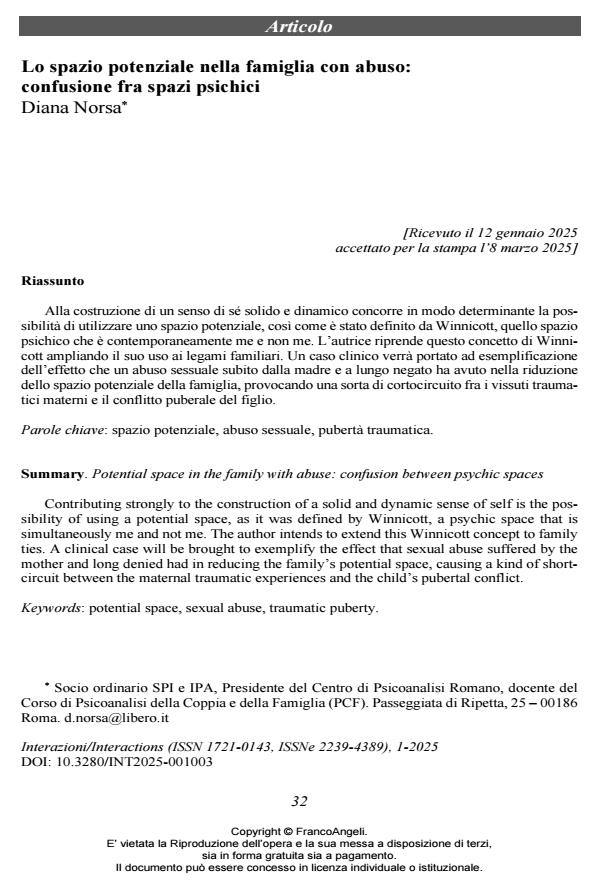Potential space in the family with abuse: confusion between psychic spaces
Journal title INTERAZIONI
Author/s Diana Norsa
Publishing Year 2025 Issue 2025/1
Language Italian Pages 14 P. 32-45 File size 86 KB
DOI 10.3280/INT2025-001003
DOI is like a bar code for intellectual property: to have more infomation
click here
Below, you can see the article first page
If you want to buy this article in PDF format, you can do it, following the instructions to buy download credits

FrancoAngeli is member of Publishers International Linking Association, Inc (PILA), a not-for-profit association which run the CrossRef service enabling links to and from online scholarly content.
Contributing strongly to the construction of a solid and dynamic sense of self is the possibility of using a potential space, as it was defined by Winnicott, a psychic space that is simultaneously me and not me. The author intends to extend this Winnicott concept to family ties. A clinical case will be brought to exemplify the effect that sexual abuse suffered by the mother and long denied had in reducing the family’s potential space, causing a kind of short-circuit between the maternal traumatic experiences and the child’s pubertal conflict.
Keywords: potential space, sexual abuse, traumatic puberty.
Diana Norsa, Lo spazio potenziale nella famiglia con abuso: confusione fra spazi psichici in "INTERAZIONI" 1/2025, pp 32-45, DOI: 10.3280/INT2025-001003